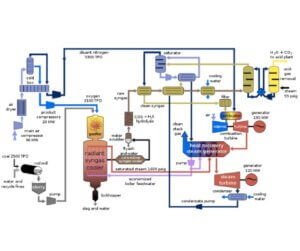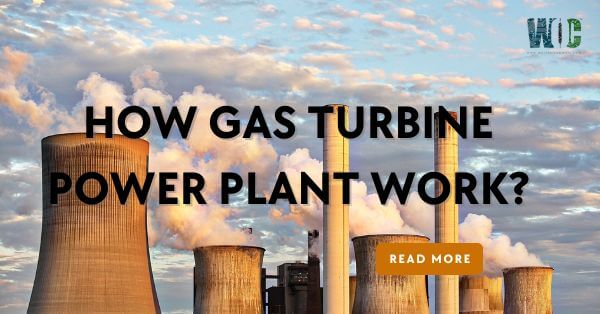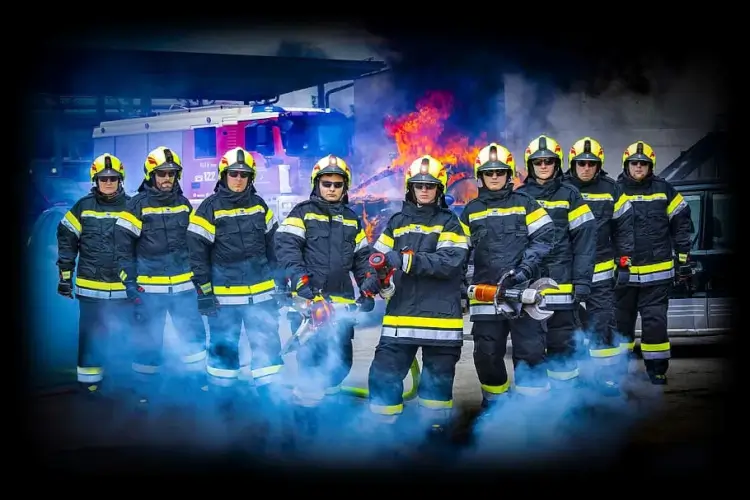INTRODUCTION:
A gas turbine is a combustion engine at the center of a power plant that may transform mechanical energy from natural gas or other liquid fuels. Gas turbines are the primary mover in a gas-turbine power plant, which produces electricity. This power plant often works in tandem with a steam power plant. Limited electrical energy can be produced with this type of power plant. These power plants are typically used as peaking power plants.
OPERATION:
Natural gas is the fuel used to run this power plant. The air is drawn in by the turbines at the front of the machine, where it is compressed, mixed with fuel, and ignited under high pressure. Through the turbine blades attached to the turbine shaft, the hot gas emitted expands. The shaft turns, creating mechanical energy that the generator then transforms into electrical energy.
INDUSTRIAL GAS TURBINES FOR ELECTRICAL GENERATION:
As previously mentioned, in a combined cycle arrangement or cogeneration configuration, this sort of power station is typically utilized in conjunction with a steam power station. Both approaches are effective at raising the generating plant’s overall efficiency. Due to their minimal greenhouse gas emissions, this sort of electricity-generating power plant (and other renewable energy sources) will be more popular among future generations.
GAS TURBINE IN A COMBINED CYCLE:
Due to their high operating costs, gas turbine stations are typically built in a combined cycle configuration with steam power plants. The combined cycle configuration is seen in the above diagram. As you can see, this combined cycle arrangement station has a far higher overall efficiency than a steam power station, which has an efficiency of about 30%.
ADVANTAGES:
- Compared to a Steam Power station, it is easier to design and build because no boilers are needed.
- Much more compact than a steam power station with a similar capacity
- Reduced operational expenses
- Because a condenser is not necessary, less water is used.
- There are few maintenance fees.
- Low maintenance costs
- It can start fast
- Zero standby losses
DISADVANTAGES:
- Initial difficulty Compressor needs to be running, hence an external power supply is required.
- Since the compressor requires more power to run, the net output is low.
- The plant’s overall efficiency is only 20% because the exhaust gases still contain heat. only effective when set up as a combined cycle
- The combustion chamber’s temperature is too high, which reduces life.
GAS TURBINE WORKING PRINCIPLE:
Similar to how high-pressure steam drives a steam turbine, gas turbine engines obtain their power by burning fuel in a combustion chamber and then turning a turbine with the quickly moving combustion gases. However, the gas turbine differs significantly in that it features a second turbine that serves as an air compressor positioned on the same shaft. The air is drawn in, compressed, and fed at high pressure into the combustion chamber by the air turbine, which intensifies the flame’s burning. It is a system for positive feedback. As the gas turbine accelerates, the compressor likewise does so, forcing more air into the combustion chamber.
This enhances the fuel’s rate of combustion, which in turn sends more high-pressure, hot gases into the gas turbine and accelerates it even more. Controls on the fuel supply line that cap the amount of fuel given to the turbine and hence cap its speed prevent uncontrolled runaway. The Brayton cycle is the name of the thermodynamic method used by the gas turbine. Similar to the Carnot cycle, whose efficiency is increased by raising the working fluid’s temperature differential between the machine’s input and output, the Brayton cycle’s efficiency is raised by raising the pressure differential throughout the apparatus. A compressor, combustor, and turbine make up the three primary parts of a gas turbine.

Air, the working fluid, is compressed in the compressor (adiabatic compression, which results in no heat gain or loss), combined with fuel, and then burned by the combustor in the combustion chamber under constant pressure circumstances (constant pressure heat addition). The heated gas that results from this expands through the turbine to produce work (adiabatic expansion). The compressor consumes a large portion of the power generated by the turbine, with the remaining energy being used to run auxiliary devices and perform useful tasks. Since the air is not recycled, the fourth cycle step—cooling the working fluid—is removed, making the system an open system.
GAS TURBINE AERO ENGINE:
Gas turbines are lighter and smaller than internal combustion engines with the same power and have a very high power-to-weight ratio. Despite having a simpler mechanical design than reciprocating engines, they are more expensive to produce due to the high speed and high-temperature operation requirements that necessitate high precision parts and exotic materials.
Production of Electrical Power In electricity-generating applications, the turbine is used to drive a synchronous generator that produces the electrical power output; however, because the turbine typically operates at very high rotational speeds of 12,000 rpm or more, it must be connected to the generator through a high ratio reduction gear since the generators run at speeds of 1,000 or 1,200 rpm depending on the AC frequency of the electricity grid.
Configurations of turbines There are two main ways to employ gas turbine power generators. Simple systems with a gas turbine powering a generator of electricity. Systems called combined cycle systems, which are made to be as efficient as possible, use the steam generated by a steam turbine to drive a gas turbine by heating the hot exhaust gases from the gas turbine.
TURBINE PERFORMANCE:
Generator Power Output Maximizing the output per pound of airflow will reduce the size and weight of the turbine for given output power. The airflow through the turbine must be maximized to do this, which in turn depends on optimizing the pressure ratio between the air inlet and exhaust exit. The primary determinant of this is the pressure ratio across the compressor, which in contemporary gas turbines can reach a maximum of 40:1. At a given firing temperature, the pressure ratio increases in simple cycle applications resulting in efficiency benefits, but there is a limit because the compressor will use more energy as the pressure ratio rises.
SYSTEM EFFICIENCY:
Because it directly influences fuel consumption and running costs, thermal efficiency is significant. o Small-scale turbines Just to run its compressor, a gas turbine requires a lot of power. As with all cyclic heat engines, a turbine’s efficiency increases with its maximum operating temperature (Carnot’s Law), but it also results in more energy being lost as waste heat through the hot exhaust gases, which are normally well above 1,000°C.
Therefore, the efficiency of simple cycle turbines is very low. Design efficiencies for large equipment range from 30 to 40 percent. (Aero engines have an efficiency between 38 and 42 percent, whilst low power microturbines (less than 100 kW) only reach 18 to 22 percent.) Although increasing the firing temperature increases output power for a particular pressure ratio, efficiency is also sacrificed because of an increase in losses from the cooling air needed to keep the turbine parts at safe operating temperatures.
COMBINED CYCLE TURBINES:
However, it is possible to recover energy from simple cycle systems’ waste heat by employing a hybrid system’s exhaust gases to create steam and power a steam turbine electrical generator. In certain circumstances, the exhaust temperature may be lowered to as low as 140°C, allowing combined cycle systems to operate at efficiencies of up to 60%. Increases in pressure ratio have a less noticeable impact on efficiency in combined-cycle applications since the majority of the benefit comes from increases in the Carnot thermal efficiency brought on by increases in the firing temperature.
Read more: How to Network on Linkedin Like a Pro?
FUELS:
Although natural gas is the most widely utilized fuel, it can be modified to use nearly any flammable gas or light distillate petroleum products, including gasoline (petrol), diesel, and kerosene (paraffin), which happen to be accessible locally. If heated first to reduce viscosity to a level appropriate for burning in the turbine combustion chambers, crude and other heavy oils can also be used as fuel for gas turbines.
APPLICATIONS:
Large-scale power generation can utilize gas turbines. Examples include applications that deliver 600 MW or more from a co-generating facility that combines a 400 MW gas turbine and a 200 MW steam turbine. Such installations are typically utilized to supply power to remote locations like oil and gas fields rather than for base load energy generating. However, they are used in major electrical grids to deliver peak power during emergencies using peak shaving applications. In order to provide portable emergency electrical supplies that can be transported by truck to the site of demand, low-power gas turbine generating sets with capacities up to 5 MW can be accommodated in transportation containers.
WOC has the largest stock of GE Speedtronic Replacement Spare Parts. We can also repair your faulty boards. WORLD OF CONTROLS can also supply unused and rebuilt backed up with a warranty. Our team of experts is available round the clock to support your OEM needs. Our team of experts at WOC is happy to assist you with any of your automation requirements. For pricing and availability on any parts and repairs, kindly get in touch with our team by phone or email.







